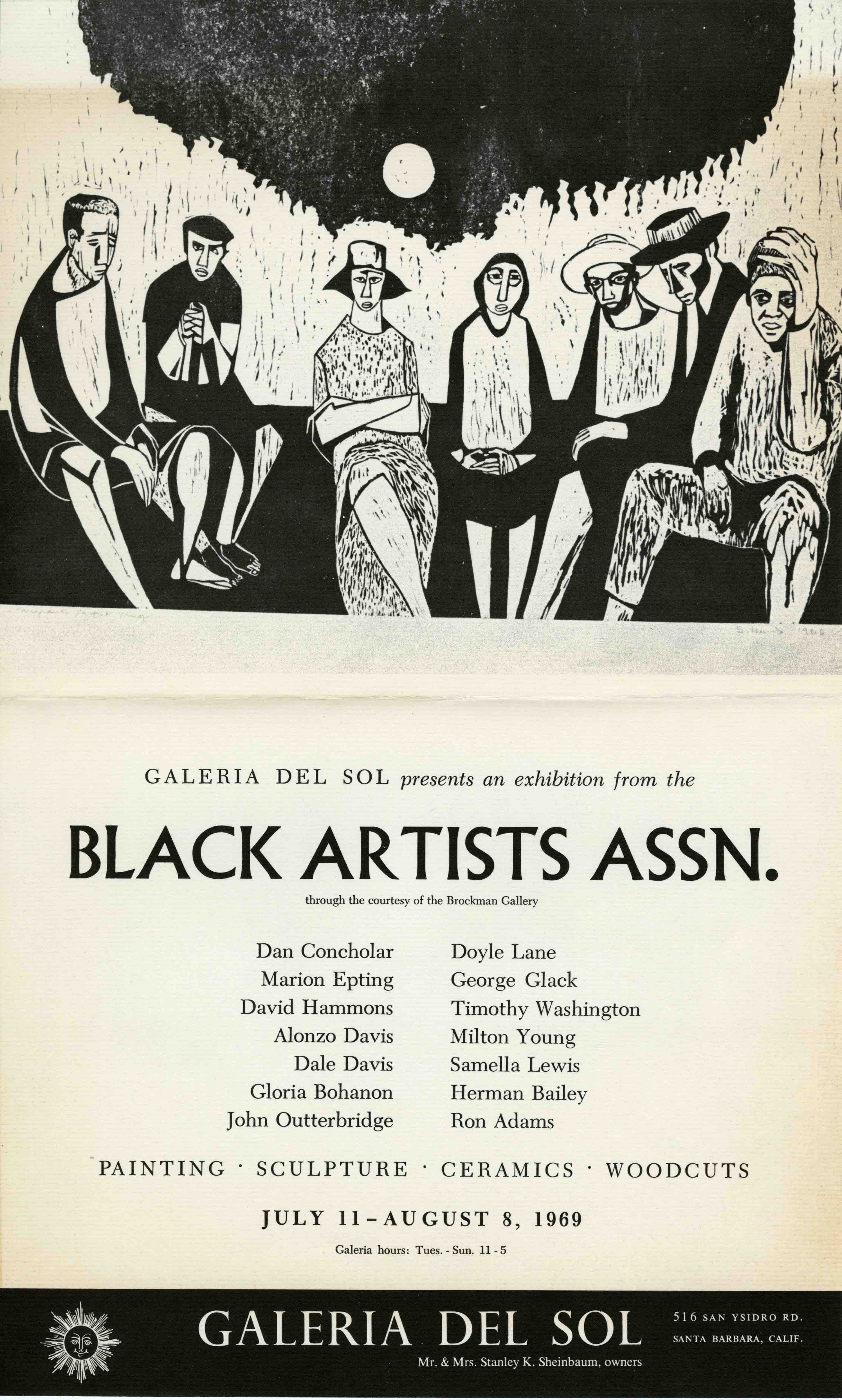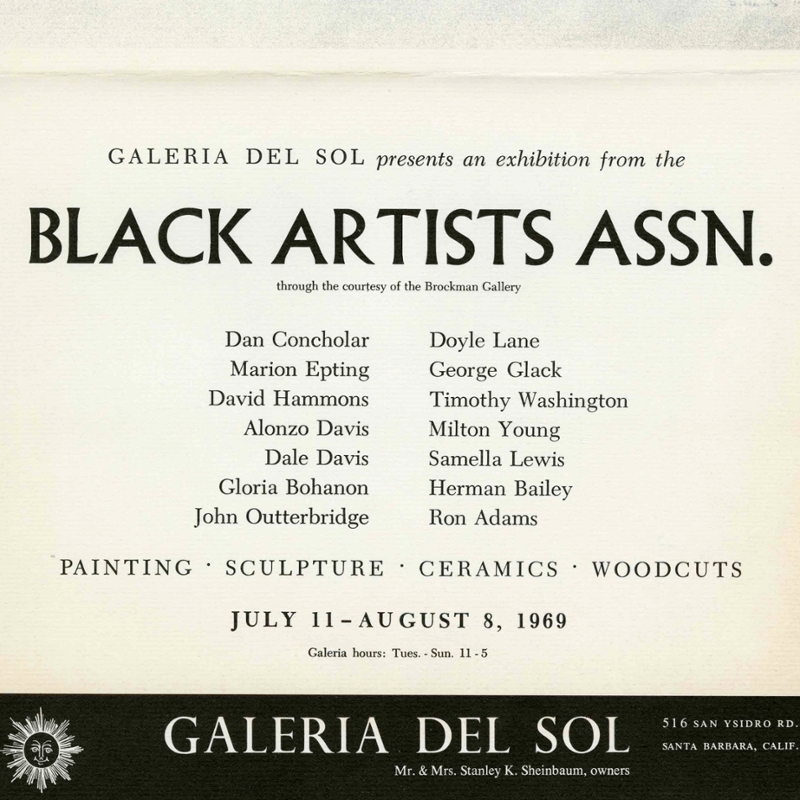About the Artist
Professor Emeritus Marion A. Epting has had a prolific and impactful career as a printmaker and educator. Born in Forrest, Mississippi in 1940, Epting moved with his family to California when he was young. He served in the Navy, and later received his BFA and MFA from the prestigious Otis Art Institute where he studied under Charles White (1918-1979) and Bentley Shaad (1925-1999).
Epting’s interest in art started early. He recalled childhood sidewalk chalk drawings in his interview with Dean Tracy Butts, and early commissions from his Captain to paint during his service in the Navy. Epting was recruited from Otis by the Chair of the Art Department at Chico State, Tom Griffith, and Epting became the first Black tenure-track professor at Chico State when he was hired in 1969. Epting served on the Art faculty from 1969 until 2007, teaching alongside his friend and mentor Janet Turner (see interview with Dean Butts, 37:37). During his time at Chico State, he served as Chair of the Art Department and member of the Academic Senate, and joined other colleagues such as Bob Sherrard in creating community for Black students, staff, and faculty. At the conclusion of her interview with Epting, Dean Butts thanks Epting for helping to create “the community that I was welcomed into; a community that allowed me and other individuals on campus to feel a sense of community, to flourish, and to thrive.”
In addition to Charles White, Epting's influences include physics, algebra, geometry, and twentieth-century philosophy. As Epting explains in his interview with Dean Butts, shortly after arriving at Chico State, he was asked to teach a course on African Art (“because I was Black, I suppose,” 36:52), and this experience had a profound impact on his art as it merged his interests in physics, philosophy, and art. As he explained, “I am concerned with the play of opposites: opposites which are not conflicting or competing, but complementary as necessary parts of the whole. I believe in the simultaneous co-existence of opposites. This idea has persisted for so long and has been perpetuated by so many civilizations that is the closest thing to a ‘truth’ that I know. Lao Tzu, Marx, Freud, Levi-Strauss, and the majority of Saharan African cultures all incorporated this concept into their beliefs. I incorporate three standard printmaking techniques: silkscreen, etching, and lithography" (from Collaborations: Two Decades of African American Art: Hearne Fine Art 1988-2008).
As Epting reflects, the “perpetual alternation of opposites [or] simultaneous coexistence of opposites…appears in almost everything I do” (30:27), and this is clearly on display in the prints included in the Turner's online exhibition of Epting’s work. According to the Stanley Museum(opens in new window), Epting “produces tonally rich, often monochromatic prints reflective of and responding to racial injustice… Enigmatic and imbued with deep (sometimes sourced from cross-cultural traditions, as in this print) symbolism, [his] prints marry a linear, graphic treatment of the human form with subtle, infinitely variable textures and barely perceptible patterns.”
Epting’s prints are in many collections, including the Smithsonian Institution (Washington DC); New York Public Library (New York, NY); Portland Art Museum (Portland, OR); African American Art Museum (Los Angeles, CA); Boston Public Library (Boston, MA); John and Mable Ringling Museum of Art (Sarasota, FL); Studio Museum in Harlem (New York, NY); Huntsville Museum of Art (Huntsville, AL); San Diego Fine Art Society (San Diego, CA); Stanley Museum of Art at the University of Iowa (Iowa City, IA); the Fine Arts Museums of San Francisco (San Francisco, CA); and the Janet Turner Print Museum at CSU, Chico (Chico, CA).
Archie Hearn, a prominent collector of African American Art, credits Epting for his collecting spark: “my real interest in collecting African American art began while I was in college. As an undergraduate student in the sciences, I was fortunate to have as a roommate an artist by the name of Marion Epting…Marion is a published artist, professor of art and a philosopher…being in the presence of Marion and his colleagues, particularly on those weekend evenings, the discussions on art and its relevancy to society where absolutely fascinating. From this initial exposure, I developed some appreciation of the importance of art and I began to collect images – primarily by African American artists. From that point on, I felt it was encumbered upon me to expose my family to the arts," (from Collaborations: Two Decades of African American Art: Hearne Fine Art 1988-2008).
Epting’s work was included in the significant 2019 exhibition “Life Model: Charles White and His Students,” held at the Charles White Elementary School (Los Angeles, at the original site of the Otis Art Institute) to accompany “Charles White: A Retrospective” at the Los Angeles County Museum of Art. The exhibition included work by Epting alongside work by Kerry James Marshall, David Hammons, Alonzo Davis, Richard Wyatt Jr, and Ken Twitchell. As Kerry James Marshall notes, “like me, all of the black students who matriculated through Otis were there primarily because of White. He was a kind of spiritual father for many of us. To be sure, his reputation as a great draftsman and teacher was universally appealing, but when there were so few black artists of his stature to lean on it just meant more” (from the opening essay for catalog for “Charles White: A Retrospective”). Epting’s work also appeared in a 1969 exhibition at the Galeria Del Sol (JPG) of work from the Black Artists Association; and in the seminal 1970 Los Angeles City College exhibition organized by Alonzo Davis, Black Art in L.A., along with work by Dan Concholar, Alonzo Davis, Dale Davis, David Hammons, Marvin Harden, David Outterbridge, William Pajaud, Noah Purifoy, John Riddle Jr., Betye Saar, Van Slater, and Charles White. In 2005 Epting’s work was included in Pathways: 1966-89 (California African American Museum and Los Angeles Municipal Art Gallery), the second part of a three-part exhibition, African American artists in Los Angeles: a survey, organized by the City of Los Angeles, Department of Cultural Affairs, featuring African American Artists who lived and worked in Los Angeles between 1945-2003.
Additionally, Epting’s work has been featured in multiple books and group exhibitions including: Black Dimensions in Contemporary American Art (New York: NAL Plume, 1971); the exhibition Black Artists / South at the Huntsville Museum of Art in 1979; African American Art & Artists (Berkeley: University of California Press, 1990); Black Artists on Art (Los Angeles: Contemporary Crafts, 1969); Twentieth-Century Artists on Art: An Index to Artists’ Writings, Statements, and Interviews (Boston: G.K. Hall & Co., 1985); In Black and White: Afro-Americans in Print (Kalamazoo: Kalamazoo Public Library, 1980); and The Black Artist in America: An Index to Reproductions (Metuchen: Scarecrow Press, 1991).
Epting was honored as the recipient of the 2018-2019 Turner Prize for Excellence in the Arts, and the Turner purchased Kara Walker’s print "Buzzard’s Roost Pass. Harper’s Pictorial History of the Civil War (Annotated)," offset lithograph and silkscreen, 2005, to mark Professor Epting's vital contributions to art, The Turner, and CSU, Chico.

1969 exhibition poster




